|
Christmas is a season and not just a day. Watch this video and learn more about the days of Christmas.
Consider these during the Christmas season
Celebrate how blessed we are with the gift of the Christ child not in a day but for a season. He is Immanuel, God-with-us.
0 Comments
Feasts during the Christmas season are about family, friendship, and the expression of gratitude, but for many of us, often these feasts can lead to overeating. Watch the thought-provoking video by Fr. Mark Mary of the Franciscan Friars of the Renewal on our relationship with food, material attachments, and our sisters and brothers in need. Consider these when eating especially during the Christmas season...
Share with others the gift of food, made with an abundance of love. Better is a dinner of vegetables where love is than a fatted ox and hatred with it."
Find links to blessings and other resources below to help you celebrate this special feast of Holy Family with your family and friends.
One of the only two Holy Days of obligation outside of Sundays in Canada is a Solemnity dedicated to Mary's motherhood. We close out the Christmas octave with a day to honour Mary as the Mother of God. Find links to blessings and other resources below to help you celebrate this special feast with your family, friends and community.
Epiphany means “manifestation”, that moment when we suddenly understand something that previously was hidden from us. Christmas is about the Incarnation, the coming down of the Son of God to become human, one of us. Epiphany is the showing of the Christ Child’s divinity, which is beginning to manifest itself in the world.
In his recent apostolic visit to Cyprus and Greece, Pope Francis addressed the youth... "Realize that your worth is in who you are and not what you have. Your worth is not in the brand of the dress or shoes you wear, but because you are unique. Here I think of another ancient image, that of the sirens. Like Odysseus on his voyage home, in the course of this life, which is an adventure-filled journey to the Father’s House, you too will come across sirens. In mythology, the sirens by their songs enchanted sailors and made them crash against the rocks. Today’s sirens want to charm you with seductive and insistent messages that focus on easy gains, the false needs of consumerism, the cult of physical wellness, of entertainment at all costs... All these are like fireworks: they flare up for a moment, but then turn to smoke in the air. I understand, they are not easy to resist." (Athens, December 6, 2021) Consider these during Advent...
Take delight in the Lord, and he will give you the desires of your heart." Psalm 37:4
These are words that come to mind when I reflect on my experience of Catholic Education in Brooks. My husband and I didn’t know what to expect coming here with two young children in tow 20 years ago, but this place has a way of grabbing hold, seeping into your heart and not letting go; it has a way of becoming home. There are many people who have influenced my development as a Catholic educator: administrators who recognized my potential and encouraged me to have faith in my ability; colleagues who were, and are, my greatest role models; and students, who taught me more about life and faith than I could ever teach them and whose experiences showed me what courage really is. What I value most about St Joseph’s Collegiate. is threefold. It’s the people. It’s the presence of the Holy Spirit working on hearts and changing people. It’s a true desire to be “a community, rooted in faith, seeking excellence for all”. It’s a family. I’d like to share story of a young man I’ll call Cas* who came to St. Joseph's for only one year. He had a great smile, and he loved basketball. He was respectful and attentive but wasn’t achieving very well. One day, Cas approached me and asked for help. He described his life at home with no rules; he could do what he wanted, when he wanted - and he did. Although this might sound great, Cas wasn’t happy. He needed parameters. Together, that day, we created some expectations: he would work in my classroom every day after school, and most importantly, he would call me every night at 10 pm to let me know that he was home. That’s all he needed - someone to care enough to set some boundaries. Cas’ grades and self-esteem improved drastically, and somewhere along the line, he started calling me “mom”. This young man left an indelible mark on my heart and this experience, to me, encapsulates how I feel about Catholic education. We don’t know the impact we have on students - a kind word, a listening ear, an open door. What an incredible responsibility and an incredible privilege! I feel deep gratitude for my time in Brooks - to be part of all the amazing graduation celebrations and to witness the growth of our school into a vibrant and diverse community. God calls people here for a reason, and I know I was called to be in this place at this time. Leading a school during a pandemic is one of the most difficult things I have ever done, and it has challenged me to the core. But I am able to appreciate my freedom, my family, my upbringing, and my faith even more. I am thankful that God trusted me to do His work. What an incredible blessing! As I move on from this amazing community, I know that the Holy Spirit will continue to be present here, and with that knowledge, there will be many more blessings, more challenges, more gratitude, and more growth. Thank you, Lord, for this incredible gift. *not his real name
I was born into a faithful farm family who attended church regularly. My sister and I were among the little people who flocked to Sunday School and ran around the church basement while our parents served coffee and visited with other members of the congregation. It was with sincere devotion that I was baptized as an infant and confirmed by my own choice as an adult in the United Church. My journey continued in the United Church when I was married, and my husband and I welcomed two beautiful children into our family. We were living in Edmonton and I was teaching at a public school when my husband received the news that he was being transferred to work in Calgary. Shortly after arriving there, we needed to look at schools for the children. As a teacher, I started to research the schools in the area and found myself drawn to the Calgary Catholic Board. My husband was baptized Catholic and so we enrolled in the neighbourhood Catholic School. I was thrilled with the education my children received and even more excited about the learning they were doing in regard to faith. They came home with stories about their lessons and asked questions about what they were learning. The more they asked, the more I thought about my responses and I was not satisfied. I attended liturgies at school and asked questions of my husband but felt like I needed more in order to support my children on this path that I had chosen for them. Soon, I found myself in the office at St. Albert the Great Parish and enrolled in the RCIA program. “Information is what I need”. “It is for the children”. “I am happy with my faith and the United Church”. These were the lines that I was telling myself and they were what got me started; my feet in the door I guess you could say. As we hear so often, “God works in mysterious ways”. The more I learned at RCIA, and the more I volunteered at the school, the more invested I became. Wednesday nights became the best night of the week as I joined my sponsor and delved deeper into the faith. RCIA allowed me to grow and expand on the faith that had been fostered in me as a child. As an adult, I am acutely aware of the fact that I had an opportunity to look at faith in a new way and to choose it for myself (with the guidance of the Holy Spirit and many other faithful companions). Now, as a Catholic school teacher, I am blessed daily to learn and grow in faith alongside my students. It is with humble appreciation that I embrace each day of learning that will last a lifetime and beyond.
Some of my fondest memories attending a catholic school were walking the 2 blocks or so to St. Mary’s Parish for school mass. Along with the holy mass itself, I enjoyed the brief reprieve from school work, a chance to visit with my classmates while walking, and singing in the school choir. I had learned harmonies from my mom singing at mass on Sundays, (and to Celine Dion at home) and loved to create music alongside my peers. Welcoming people at the door, reading Scripture, playing an instrument, and intercessory prayer; school mass gave us the opportunity to practice using our gifts for the glory of the Lord. When I was 16, our school sent a bus-load of students to Prud’Homme Saskatchewan to attend a Face to Face Retreat. I later learned that Prud’Homme was also the first retreat my now husband attended, although neither of us remember meeting. At the retreat there were talks about God’s love and the saints, praise and worship sessions, time to attend the Sacrament of Reconciliation, one on one prayer ministry, and musical Adoration. I was moved by the love these young people had for our Lord. During one of the worship songs, I vividly remember looking at the worship leaders thinking how lucky they were to witness this fire at each retreat. In that moment I whispered under my breath, “Lord, it would be so cool to do that.” The Lord answered that little prayer and 3 years later I was given the privilege of singing and serving with Face to Face Ministries for what would become 4 incredibly faith formative years. During these years, the seeds of service, self-sacrifice, prayer, and faith that my Catholic education had rooted in me, blossomed into an undeviating love for our Lord that continues to grow today. Now raising our own 4 children, I am so grateful to pass along the good, the true, and beautiful to them through the gift of Catholic education. I am grateful to be able to root their identity in Jesus, our firm foundation, especially as our world faces such confusion of identity today. I am grateful to introduce to them the Sacraments that bring true life and peace to their souls. I am grateful to read to them the lives of the Saints so that they have role-models of virtue, and someone to relate to in times when they fail. I am grateful to teach them the rosary, so that one day they would recognize the importance of prayer and Our Lady’s intercession. I am grateful to bring them to Mass and Adoration so that they know our Lord deserves their time, and so that they know where to go when facing a difficult decision. In a word, I am grateful for Catholic education because it was an extension of my domestic church; it cultivated the virtues my parents instilled in us at home while preparing me for a life of docility to the Spirit.
 Fr. Kevin Tumback in his youth Fr. Kevin Tumback in his youth When Fr. Kevin Tumback (Pastor, All Saints Parish in Lethbridge) speaks about his past, it’s clear that a pivotal figure is his father, Andrew Clement Tumback, known to all as Tiny. Tiny was the second youngest of twelve children and spent most of his life farming in Eston, SK. He was married to Audrey for 61 years, had seven children (living) and died at the age of 93, having witnessed the ordination of two sons and the arrival of eight grandchildren. Yet these many achievements do not begin to capture the essence of a man who, according to Fr. Kevin, was introverted, reflective and well-read. “My father was liked and respected,” Fr. Kevin said, “his funeral was packed.” Tiny’s influence was perhaps felt most keenly by his children, whom he formed in faith, mostly by setting a good example. Fr. Kevin shared a seminal incident from his youth which speaks volumes. After an infraction, young Kevin was punished by having to clean out the chicken coop, not the Tumback coop but the neighbour’s. “It was hot and stinky work,” Fr. Kevin recalled. “It was my punishment but Dad was working right there beside me the whole time.” Tiny was instinctively demonstrating the way God the Father never leaves us, even as we face the consequences of our own sins. Though a cradle Catholic, Tiny didn’t take his faith for granted. He had a firm devotion to the Rosary, the Sacred Heart and especially the Eucharist. He was an altar server well into his senior years to demonstrate one’s duty to participate at the Holy Mass. He also helped out neighbouring farmers and delivered eggs and milk from the Tumback animals to needy families. Tiny Tumback wasn’t a demonstrative person. He practiced what Fr. Kevin refers to as the “ruffled hair” form of affection. “Dad treated each of us differently… but we all understood it. You need to acknowledge (each child’s) strengths and weaknesses and Dad was good for that… One of my father’s nicest compliments, the day after I was ordained was, ‘Well son, if you’d gone straight from high school into the seminary you would have made a really lousy priest. But with your years of experience you’ll make a good priest.’” Tiny was referring to Fr. Kevin having worked 15 years in the corporate sector before joining the seminary.
Sometimes children reveal experiences which then help encourage revitalization. Even simple, trivial remarks influence choices to improve our normal state. Each day contains invitations to do and be better – to better show love. There is a story that I often have opportunity to share which I think illustrates this point. At that stage of our family life it was my more common practice to attend monthly recollections – reflections offered to men that helped us in our lives as husbands, fathers, and professionals. My wife herself enjoyed similar gatherings for women (and has done a better job of making these a priority in the ensuing years). While the content was always worthwhile, I don’t happen now to remember the particular topic of that evening. In the midst of it however, the priest mentioned his experience in the Confessional of commonly hearing wives and children speak of their fear in the face of husbands’ anger. And he thereafter continued with the rest of the meditation. When I returned home that night my wife asked how the recollection had gone and I explained the topic, which I then remembered. I also shared Father’s comment about fear in the face of husbands’ anger. And I added, “Is that funny?” By this I meant, isn’t it strange that some families have that experience. My wife replied, “Not really.” Having not experienced abuse in her childhood, and more importantly to me, my having never been violent, I asked her what she meant. She commented further, “Sometimes your anger seems so big.” That whole exchange has remained with me since then. And I began paying attention. I noticed my own response to being around other men when they exhibit ‘big anger’ and how their families did as well – my work as a marriage & family therapist sometimes places me in the midst of such experiences. I won’t argue that anger is never appropriate, or that being loud isn’t sometimes useful for drawing attention where needed. Neither will I deny that some women struggle with expressions of their own anger; please remember that I have lived with nine daughters. But I echo Aristotle who wisely commented that when, to whom, about what, and with what intensity we express our anger are also important considerations. The fact that it is common for wives and children to be fearful in the presence of their husbands and fathers should make us pause. Communication, of which anger is a subtype, is meant to share and benefit relationships. Non-destructive argument is meant to advance better ways by which to relate. And relationships are expressions of love, whether conjugal, paternal, platonic, or simply human. Is our anger in the loving service of justice, or is it prideful self-assertion? One of the readings at our wedding was from 1 John. There the beloved apostle writes that we love because God first loved us (verse 19); we chose this as a motto for our family. But in the verse right before it, the Holy Spirit communicates through John: “In love there can be no fear, but fear is driven out by perfect love: because to fear is to expect punishment.” That this Fathers’ Day would see a renewal of and recommitment to love in all families.
In 1673, St. Margaret Mary Alacoque received a vision of Jesus’ compassionate heart, pierced by the sins of the world, which gave impetus to the devotion of Sacred Heart of Jesus. St. Margaret Mary also received private revelations from Jesus on June 16, 1675. Read more The Church celebrates the Solemnity of the Sacred Heart of Jesus on the Friday following the second Sunday after Pentecost. The term "Sacred Heart of Jesus" denotes the entire mystery of Christ, the totality of his being, and his person considered in its most intimate essential: Son of God, uncreated wisdom; infinite charity, principal of the salvation and sanctification of mankind. The "Sacred Heart" is Christ, the Word Incarnate, Saviour, intrinsically containing, in the Spirit, an infinite divine-human love for the Father and for his brothers. (Directory on Popular Piety and the Liturgy). Sacred Heart of Jesus Resources
Javier Martinez had just removed his face shield and mask when a woman suddenly appeared in the room and approached him. The woman was a resident of the memory care wing of the seniors’ residence where Martinez was working. She was also positive for COVID-19. “It happened so fast and I remember thinking, ‘it’s highly probable that I’ve got COVID,’” recalls Martinez, a registered nurse and the father of five. He was right. Martinez is a clinical leader in the supportive living section at St. Marguerite Manor, a Covenant Care home in northwest Calgary. Two residents at that facility died in the second wave of the global pandemic declared in 2020. Martinez, however, was infected in Edmonton. He was there in November 2020 to provide support in a seniors’ care home hit much harder by the second wave of the pandemic. In addition to several deaths and widespread infection, many staff at that home were infected and unable to work. While his first test was negative, Martinez developed body aches and a headache soon after his return to Calgary. The nurse knew he had COVID-19 well before the second test yielded a positive result. By then, he and his wife Colette had already discussed what they would do to keep the family safe. They did what they could to keep their kids, ages 13 to three, away from their dad. Still, the oldest and youngest, two of their three daughters, were infected. Both children weathered the virus well. “We were fortunate,” says their dad. 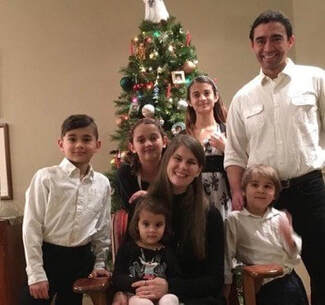 Javier and his family Javier and his family A culture of care More than a year after the pandemic began, vaccinations and the careful of use of PPE (personal protective equipment, like masks) have imbued Martinez’s view from the front lines with a great deal of hope. In the early days, “there was a lot of uncertainty because it was brand new and we had to deal with a lot of changes. Provincial orders from the Chief Medical Officer of Health changed often, sometimes daily. One of the most dramatic shifts was the move to restrict visitors. That was really tough. Some of our residents have large families who are very close. I had to explain the health rules to many people and because these were mandated changes, we didn’t have much flexibility. This was very tough on residents and their families.” Careful adherence to the rules definitely kept people safe, says Martinez. Only one resident and a few staff at St. Marguerite Manor contracted COVID-19 in the first wave. The second wave was harder, but by then, something else was also at work. He says some residents talked openly about having lived good lives. They were not afraid to catch the virus and die. What they did not “want was to be the person who brought the virus into the manor. That care for other people was very strong.” Now that residents and most staff are fully vaccinated, life at the manor is more relaxed. Visitors are allowed in after screening and as of June 1, staff no longer have to wear face shields over their masks. “It’s amazing to see how things have changed for seniors in supportive living and long-term care because of the vaccinations,” says Martinez. Looking back, Martinez thinks about what the pandemic has taught him as a Catholic man, nurse, husband and father. He knows the people he works with were negatively impacted when denied access to family and friends. He also knows many of them weathered the storm with grace. “I guess I think about how we’re called to serve our neighbours—and to serve the best interests of our neighbours,” says Martinez. A parishioner at St. Gerard’s parish in Calgary, he also thinks about how the Catholic community supported that part of the gospel message. As he sees it, sometimes service is as simple as doing what’s best for others. Written by Joy Gregory for Faithfully
Photos courtesy of Javier Martinez God is with us; who are we accompanying? On Trinity Sunday, we often hear homilies about the theological mystery of the Trinity, but this year, perhaps we could focus on the theological miracle: that the three persons of God have promised to be with us to the end of time. We have been promised that the Triune God will never leave us. Just as Jesus came to earth to reveal this to us, we are asked to be ambassadors of this kind of love in the world. Who knows God’s constant presence because you show up for them consistently? Your family and friends? Your community and neighbours? What about the sick and the suffering, the neglected and needy, the addicted and the poor? How are we bearing witness to the Triune God’s constant and faithful presence as an act of faith in the Blessed Trinity?* May others know God’s enduring love because we have borne witness to it so well.
(excerpt from National Pastoral Initiative for Life and the Family, May 2021). Like May, October is a month of special dedication to Mary and therefore also to mothers. Three of our daughters were born in October, and though not born then the due date for our eldest could have placed her there too. The youngest of these October-babies was named after my grandmother – and born the day after Gramma died. While not unexpected, her death was felt deeply by many. Though Gramma was not herself part of their social circles, friends of my parents and in-laws of our relatives honoured her and our family with their presence at the funeral. Her young great-granddaughter, less than a week old, flew with my wife back home to be there. And I drove the eight highway hours with our other six daughters. As a group, mothers exemplify the best of those supportive qualities, especially their own children. While fathers certainly love our children too, it has been said that in some ways we learn how to father by watching our wives mother. The Second Vatican Council said the family is “a school of deeper humanity.” To be in Gramma’s presence was to learn, and being deprived of that presence (even if we know that death changes life, does not end it) fifteen years later is still a loss. Thinking of Gramma brings memories of love, joy, peace, patience, kindness, goodness, faithfulness, gentleness, and self-control. We call these Fruits of the Spirit, the result of living a life of virtue. They came from how she lived her life, but like real fruit they were enjoyed more by those around her than by the one who produced them. Our eldest daughter commented that she wished the lesson of appreciating others better was not learned after their death. It doesn’t need to be so but we often let it be. May reminds us to appreciate what is perhaps the first of our human relationships, with our mothers. We can thank these women explicitly with words and gestures, as well as implicitly in how we generously live our lives.
Christina Remijn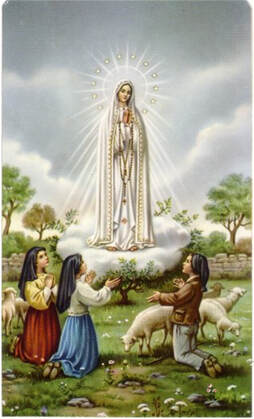 Our Lady of Fatima Our Lady of Fatima
Christina and her husband Japp farm near Bow Island. When I asked how Christina wanted to be described she said, “I’m a farm wife and mom just trying to get through!” and we laughed. She and I had just caught up for nearly half-an-hour as we talked about raising kids, farming, husbands, and yes, Mary and our Catholic faith. Anyone who knows Christina knows she tells it like it is. It was a fantastic, refreshing conversation.
As we were talking I learned that though she is a cradle Catholic, Christina grew up attending a Protestant youth group, and instead of causing her faith to waver, she said, it actually did the opposite, especially in regards to Our Lady. “That’s why I’m confident that we can go to her and pray with her.” “If Jesus is the son of God,” she said, “then who is this person who God chose to be His mother? If she’s special enough for God, then she’s special enough for me.” With a firm foundation of Our Lady’s importance, Christina said she, like so many of us has had “no ‘aha Mary’ moment.” “She had one perfect kid and a saint for a husband,” she exclaimed at one point in our chat and I laughed in agreement because I have often felt exactly the same way. It’s true that sometimes we have to dig a little deeper to look for similarities between ourselves and Mary. “We’re so ordinary and boring,” she said, “I love Mary; I need Mary; we named our oldest child Mary after her, but we just do normal Catholic stuff.” By normal, Christina meant that they ask Mary’s intercession and pray the Rosary as a family. A regular family rosary has long been an ambition of mine, but I’ll admit that we haven’t made it happen, which is why I admire that Christina and Japp did it this past Lent, which also coincided with the time that the farm holds a few less demands, and therefore allows Japp to be there for dinner and bedtime. Christina said, “when it’s just me by myself with five kids, we manage a decade of the Rosary and sometimes it’s pretty ugly, but I just trust that Mary is happy that the children are there and that she knows that it is just life with little kids.” “With the way the world is lately,” said Christina, we have felt called to be praying more and to make a point to do it with the kids, and to have the kids see us praying as well.” May crowning of Mary are a beautiful way to honor Our Lady this month, and Christina said that they’d thought of doing that this year since her daughter Mary will be celebrating her First Communion a little differently than would normally happen. As I prepare one of my own sons for the sacraments, I’m intrigued by this idea too. Pat Siray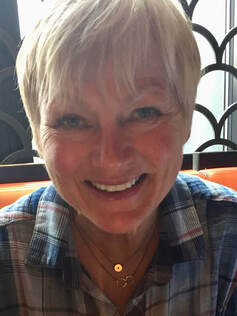 Pat Siray Pat Siray
When I first met Pat, it was as a parishioner of St. Bernard’s parish where her son Fr. Nathan had recently moved. After Mass one Sunday while visiting our parish, Pat and her husband Brian who had sat behind us with our wiggly bunch of four little boys, paused to talk to us and let us know that our Mass experience had been a flashback to theirs not-too-many years before. I have been grateful for that conversation ever since and have often thought of it as I have dealt with normal little boy behaviour time and again.
Raising a bunch of boys is a task unto itself, but raising them in the Catholic faith is a thing Pat knows about very well. It wasn’t always the case though, she said, recounting a wake-up-call she experienced when preparing her oldest for First Communion. “It was like being hit over the head with a 2x4,” she said, “I realized he didn’t know anything.” Though raised in a thoroughly Catholic home, Pat said that her years in university “weakened my faith. I never stopped believing or attending Mass, but I will admit that I became a Sunday Catholic.” Teaching her sons would bring Pat deeper into the fold of the faith, with Our Lady playing a key role. In 1991 Pat went on pilgrimage to well-known apparition site Medjugorje, “That made a huge difference in my life,” she said, “Mary played a huge role in guiding me and leading me back to her Son.” Pat started praying the Rosary again and talking to her sons about Jesus and Mary and the Church. It took her two weeks to fully unpack all that had happened in Medjugorje to awaken her faith to Brian, and “he was fascinated,” she said. “My experience changed his life.”
Sarah Stamp
I first met Sarah when we travelled to World Youth Day in Toronto in 2002 as part of an over 80 person group. My now-husband made the same trip, and it was he who suggested I give Sarah a call.
The Stamp family resides in Vauxhall, Alberta and their story is a beautiful one. They have six children and “one in heaven,” Sarah said. Mary Josephine is the name of the baby that Sarah and her husband Greg said goodbye to 9 years ago this October when she passed away at 20 weeks gestation.
 Our Lady of Sorrows, the image that hangs on the wall of the Stamp home. Our Lady of Sorrows, the image that hangs on the wall of the Stamp home.
“I’d like to say that the praying the rosary was comforting,” she said, “but really, at the time it felt like just going through the motions.
But, I think going through the motions brings us hope; we live the hope by just saying the words.” I was awestruck by how much wisdom Sarah has as a result of her family’s loss, and by the ardent conviction that Our Lady was there all along. “She picks you up and keeps pushing you toward her son,” Sarah said. “I think she helps you to trust Jesus more.” Later, Sarah found an icon of Our Lady of Sorrows that touched her heart enough to hang it on her wall. “She has this little tear on her face. It is just so beautiful to me – that she cries with us, and that she feels our pain. She has always been my mother, but somehow this icon makes her real. “I know that without tears of sorrow, we wouldn’t be able to love as God calls us to love, and in my time of sorrow, she was right there with me.” With incredible strength, Sarah and her family carry on, but with new hope. “When I experienced the pain that I hope no one experiences,” she said, “I got to know what it meant to love Jesus. He was so close. There was a point where I couldn’t even stand, and I needed to lean on people, but also, the more I leaned on Mary, the closer I came to Jesus.” “I also think sometimes “Mary gets to hold my baby,” and through all of this, I have realized that heaven is a lot closer than I thought.” I could have talked to Sarah for another hour or more, but as our little ones started to need us, one of the last things she said about Our Lady really struck me: “Part of Mary’s power is in loss; when mothers have lost so much there are no words in our hearts, it is a broken heart that you’ve never felt before, and that can really crush you. “But I ask myself, if this hadn’t happened to us, would I have been that connected with Mary?” These are words that I myself will contemplate for years to come. All of us have some suffering and grief, and though it’s hard sometimes to see that the Queen of Heaven understands there are sometimes powerful reminders, like Sarah’s story that she truly does. “I love that God gave us an example to follow – he gave us a mother, and did not leave us alone.” Mary Ma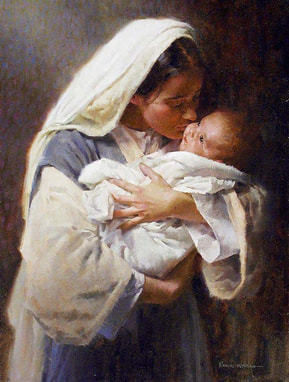 Kissing the Face of God by Morgan Weistling Kissing the Face of God by Morgan Weistling
To grow up with the name Mary puts a lot of pressure on a Catholic girl. Emulating Our Lady is hard even for those of us who don’t share her name, but who can blame Catholic parents the world over?
Mary Ma has lived 22 years with the name, and recently came to have a deeper relationship with her namesake, the Blessed Virgin. “I haven’t always had a robust relationship with Mary,” she said, admitting that “I found her unapproachable and I became discouraged because she was sinless and I knew I could never be like her.” But it was in 2019 while meditating on the Annunciation as part of a Catholic Christian Outreach faith study that changed things. “One of the topics was Our Lady’s docility to the Holy Spirit at the Annunciation and that study made me see her as a person.” “When I was a child, I prayed the rosary with my family and no one would think that I didn’t have a strong relationship with Mary.” On Ash Wednesday this year, Mary completed the Consecration to Mary guided by Fr. Michael Gaitley in his book 33 Days to Morning Glory. "Marian consecration basically means giving Mary our full permission (or as much permission as we can) to complete her motherly task in us, which is to form us into other Christs." Gaitley says in the book. On Ash Wednesday Mary said she “levelled with (the Blessed Mother), saying I know I haven’t been a good daughter, and I have been distant, but I am going to try to love you personally.” Certainly now, Mary has solidified her faith in the Blessed Mother by joining a branch of the Legion of Mary as part of the St. Francis Xavier Catholic Community. Nine or ten members meet weekly to pray the rosary and keep one another accountable in their journeys to serve Christ. This year the slightly relaxed Covid-19 restrictions, afforded our family the opportunity to attend all Triduum Masses at St. Mary’s Cathedral. Since my husband Ben volunteered as cameraman for the cathedral livestream, the children and I gratefully attended the liturgies upstairs in the crying room, so we could experience the Triduum together as much as possible. Last year when churches were closed and no one could attend Mass during the Easter Triduum, our family was given the grace to see the pandemic as an opportunity to fortify our domestic church. What seemed like one-off makeshift solutions at the time have now become annual family Easter traditions. Our own celebrations began at home again on Holy Thursday by meditating on the Last Supper with the children using a miniature altar and figurines. This was inspired by my training as a children’s catechist with the Catechism of the Good Shepherd program. This lectio divina style meditation set the mood for my husband to prayerfully perform an in-house foot washing. And following this we sat down to eat a Seder-inspired dinner. What struck me was the word ‘slave’ interwoven throughout the Triduum. In my understanding a central theme of the Seder meal is reflecting on the significance of the Egyptian slaves finding freedom through the Exodus. 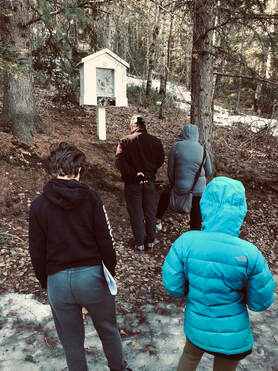 On Good Friday we continued our meditation by praying the Way of the Cross as a small family cohort at Mount St Francis retreat centre just outside of Cochrane. I allowed this life-changing truth that Jesus died on the Cross and rose again to free me from my slavery to sin and death to penetrate my heart. And on Holy Saturday we had a quiet day waiting in hopeful anticipation of the Resurrection that meets us on the other side of the Cross. The candlelit Vigil Mass is truly the climax of our liturgical year. I was awestruck by the magnificence and beauty of the words sung in the Exsultet. Again the reality of being set free from the slavery of my sin and death captured my imagination. Here’s an excerpt from the Exsultet This is the night that even now throughout the world, sets Christian believers apart from worldly vices and from the gloom of sin, leading them to grace and joining them to his holy ones. This is the night when Christ broke the prison-bars of death and rose victorious from the underworld. With my lenten pilgrimage concluded, I pondered in what ways God’s grace had worked in my life to set me free from the slavery of my sin. God loves you and me personally and unconditionally and the only thing standing in the way of His love is our own turning away from Him. And for those with eyes of faith to see that all circumstances: the good, the challenges, the everyday mundane, are all opportunities to grow in greater love of God and His Church. Happy Easter from our family to yours! And may the victory over sin and death carry on in our heart for the 50 days following Easter until Pentecost!
Names are interesting. Though we don’t usually choose our own, they give insight into one’s background. My parents had chosen another name for me but hearing that my aunt and uncle wanted to use it for their expected child, Mom and Dad left it for their use. My female cousin ended up not needing the name they reserved, but I had already been born, and named after my dad. There was a period of years when my dad thought being called ‘junior’ by friends telephoning our number (back when whole families shared a single line) was too much for me to bear; he offered to have my name changed. My wife has commented that amongst the biggest decisions we made for our children was picking their names and their godparents. We have viewed both as consequential. At the beginning, we didn’t know we had naming rules. When I was growing up back in the old country (Saskatchewan), there was a family at my school who had five children, all of whose names began with the same letter. At the time this seemed a very strange thing to do – especially when the names they used were less than common. Not every family limits the choices they allow for this key mark of identity, something the individual will probably have for the rest of his life. But I suspect most do. Sometimes they are as simple as not giving a traditionally male name to a daughter. It could be more specific and involve a particular number of letters (this is the case for a family in our acquaintance). You’d think that especially as we hoped from the beginning to have a larger family, and as it turned out that we were going to specialize in daughters, that we wouldn’t make it even more difficult to find good names. We knew that we wanted our children to share their names with strong and virtuous individuals. The devotional practice of reverencing patron saints made this pretty standard for Catholics; our daughters are each named after a canonized saint, biblical woman, or esteemed member of the family. After naming our first three daughters, we discovered that we had created a further rule: we would not repeat initial letters for first names, nor could initial letters be vowels. These final two requisites don’t have substance in themselves, but the challenge of finding names that find all criteria somehow added to the experience for us. While our girls have not placed the same restrictions on themselves in regard to their Confirmation names, they have each selected worthy patrons and sponsors. Taking names seriously is part of not only our faith, but more deeply even, God’s own nature. The second commandment tells us that misuse of God’s name is an offence. There is something of consequence here that I’m not sure we pick up very well in the 2020s. Scripture also uses names to mark changes of life: Abram to Abraham, Sarai to Sarah, Jacob to Israel, with Saul to Paul being one of the biggest. Just like the number forty represents transformation: in the Sinai, on the Ark, and with Jesus in the desert. We have just finished journeying with Jesus (“God saves”) as we’ve walked through Lent. While we likely haven’t changed any names in this time, we may have examined who we truly are, as named children of the Father. Though we suffered for forty days, Easter is now a fifty-day celebration – where fasting and mourning are behind us. The promise of spring’s new life echoes the New Life we have been promised. And our celebration of this reality means something about how we live. That’s something I’ve been thinking about too …
When I am asked to define what makes a Catholic school unique, aside from Religion classes, I often reply that it’s about the faith-based education, which is wholistic and permeates each subject, each class, each doorway, each heart. It’s a feeling. For years, I didn’t know how to explain the “feeling” to those who hadn’t experienced it for themselves. Then I returned to school and completed a degree in Journalism, and it was my new career that helped derive that explanation. As a community news reporter I have been invited into several schools in Okotoks and area, and though still intangible there is a different feel to walking inside the Catholic schools as opposed to the public. There is warmth; one can sense the presence of God in the smiles that greet them, in the crosses and images that mark the entrance to the school. This is not to say public schools are cold and unfeeling places, but the faith, the gifts of Jesus and the Holy Spirit in the halls of a Catholic school are palpable. Perhaps nothing spoke to me more than Christmas concert season, during which reporters take in concerts from each school over the course of three weeks. I noted a marked difference in the calm, the reverence and respect in the air of Advent celebrations – whether in church sanctuaries or school gyms – as opposed to the hectic, often chaotic public productions that focused more on snow and gifts than the birth of Jesus. In those moments, in the peace I feel as I enter a Catholic school, I am grateful for the education I received in these same halls years ago. I am grateful for the opportunity to have my children grace the same schools, feel that same embrace of faith in their education journey, know that God is ever-present, and learn to treat one another as the images of the Lord we are. The values they espouse, the empathy they have gained, and the ability to see God’s work in every day life are treasures I hope they cherish throughout their lives. Some still do not understand what I mean when I describe the feeling of walking into a Catholic school – of the warmth that overwhelms the senses; of appreciating you have entered a house of faith and pure, real joy; of knowing your children are in safely in God’s hands as their teachers guide them, as they learn and shape their life view and growing minds. But I understand, and my children understand – and we will be forever grateful for the opportunity to benefit from a Catholic education.
For students in our Catholic schools, Shrove Tuesday heralds the coming of Lent. This year, however, for many schools, there were no pancakes prepared by staff or community volunteers. The pancake breakfast, a tradition beloved by students and staff, like so many other community celebrations, have been impacted by COVID-19. This includes Ash Wednesday. Inherent to our Ash Wednesday ritual are the words spoken at the tracing of the cross on our forehead: “Turn away from sin and be faithful to the Gospel.” This year, within schools, there were no words spoken, nor a cross traced upon the forehead. Instead, a reverent silence was observed as our chaplains sprinkled ashes upon our heads. This was different from our normal experience of receiving the blessed ashes. Seeing the cross of ashes on the foreheads of friends and school staff is always intriguing for students and for others in the wider community who often ask what the mark means. We might say something to the effect of: “The blessed ashes remind us that we are marked by God and demonstrates to others that we are committing to change, a conversion of heart, in preparation for Easter.” This year, however, there were no casual inquiries about ashes upon foreheads. Again, this is one of the effects of the pandemic. We understand that the experience of some students and staff in terms of our faith celebrations, many relegated to online experiences, are not as we have been accustomed. There is, however, consistency in our Ash Wednesday scriptures. This steadfastness of the Word is important especially during these times of change. The readings we experience on Ash Wednesday help our students and staff understand that we all have a need for repentance and that “God is gracious and merciful, slow to anger, and rich in kindness” (Joel 2:13). St. Paul reminds us that the world sees the presence of Christ in the way we act (2 Corinthians 5:20-6:1). This is central to the Catholic school whereby through action and word, and the example of Christ, students are inspired to learn and are prepared to live fully and to serve God in one another. Finally, in Matthew’s Gospel, Jesus reminds us that almsgiving, prayer, and fasting are to be conducted humbly. These actions are inherent in our personal Lenten journey. Although the pandemic has changed many of the routines in our schools and impacted how we perform our rituals, we know that our faith traditions and the gift of Catholic Education give us resiliency and the hope to persevere in times of challenge. We are each called to bear witness to Jesus who models the necessity to walk humbly with God and with each other towards the renewal, hope, and transformation that culminates in Easter. Lent invites us to journey through the desert of our sin to the foot of the cross and ultimately, to share in the light of the resurrection of Jesus. We are, after all, Easter people. That will not change!
Although it has been over twenty years, I still easily remember a particular exchange with a student. She was in grade 12, and as often happens for homeroom teachers I had developed a deep sense of professional and personal concern for her well-being, even beyond the classroom. It was obvious that day she was upset so I asked if she wanted to talk. During the conversation she shared about relationship difficulties with her boyfriend. And in the course of that sharing it was clear to me that she was being taken advantage of. I expressed this to her and she agreed. When I asked the next logical question, why not break up with him, she gave me a reply that has stayed with me: “That’s what guys are like.” She had come to expect that romantic relationships necessarily involved being used, in exchange for at least some feeling of being wanted. To give up with this guy and not wanting to be alone, she would just have to go through finding someone else, who would treat her the same. Her family life had not prepared her to expect better. In the years since, having my own daughters, I am certain that conversation influenced the intentionality I try to bring to being a father. Subsequent personal and professional interactions have only reinforced the message. There is no need to share here lurid stories of what too many adolescent girls think is required of them, even absent from an actual committed relationship. And there is no need to demonize boys whose hormones and cultural messages have informed them of what to expect. What is needed are committed and loving parents, especially fathers, who can reinforce the message of inherent personal dignity and the profound beauty of shared marital sexuality. This is a tough campaign when young people are offered quick, though shallow, pleasure in place of disciplined, though joyful, anticipation of real unitive love. It has been said that one task of fatherhood is to assist daughters in finding their Prince Charming, without having to kiss a bunch of frogs. It seems to me that the project becomes even more difficult when parents who themselves didn’t quite hit the mark feel hypocritical in wanting their children to do what they didn’t. But don’t we always want better for our sons and daughters? Don’t we always hope their happiness and success will be even greater than our own? And don’t we believe they are really worth it? There are few real sacrifices expected of people today, except perhaps in attaining goals we have set for our own fulfillment. We are out of practice in giving of ourselves to others. We can feel resentful when someone else’s wants or needs intrude on our leisure. Yet the love of parents for their children can give us the energy to move beyond self. And it means so much. A mother of my acquaintance tells of finally having agreed to interrupt her day and play the single game of cards her son kept requesting. When his dad later asked how his day had gone, he related an experience of time with Mom that had taken up hours. Even years later it was still his memory that she had set aside so much just to be with him. Time is a precious resource, and authentic relationships require it. And relationships, especially in families and with parents, are the strongest protection we can offer in the messy goodness of human life. The liturgical year reminds us that we live within time, but we are not alone in history. As we look forward to celebrating Christ's resurrection in Easter, we can be strengthened to live family life in God’s good grace (cf. Ephesians 3:15).
We are advocates for Catholic Education for a number of issues close to our hearts. One, we know our children have functioned much better in a faith-based atmosphere than in one without God at the center. With a common denominator of faith, everyone operates with the base belief that God is number one, our actions are to reflect Him, so hope, faith and love become central tenants around which the schools and teachers function. With Catholic Education there is a basic belief that each individual student is made in the image of God and is therefore treated with respect and care. They are seen as unique individuals and are valued and treasured as such. They are seen for who they are in Christ and who they can become in Christ. Students are encouraged to live out Christian principles and values in every aspect of their lives. When our daughter started at Christ the King School in Leduc, Alberta, she was greeted by each student in her class with a handshake, welcomed and felt included right away. This greatly reduced her anxiety of starting at a new school in grade 8; she had just moved from another great Catholic school in her hometown. We highly value the dedication to excellence of the staff and administration at Christ the King in academics and life skill development. We know, and have, complete confidence that our daughters have been, and are, the beneficiaries of that excellence. Personally, as parents, we have been valued and invited to participate in the Christ the King community and have had the privilege of being active participants in our girls' education and extra-curricular activities. Sincerely, Shannon and Lynnette Whitehouse
Growing up, I often recited my “life checklist” – by the age of 25 (27 at the latest) I will have a full-time job teaching, own my first home, and be married with a baby on the way. The saying is true, God laughs when we make plans. "For I know the plans I have for you", says the Lord. (Jer. 9:11) At the age of 26, I would have told you I was at least on par with my plan. I was in a long-term relationship with someone I was sure would be my forever. Yet looking back, if I had been more honest with myself, I knew he wasn’t (and I think he did too). We were very different and yet we loved each other and celebrated our differences. But sometimes love isn’t enough. I can recall praying through tears on a car drive home, pleading with God to take him out of my life if he wasn’t the one. I got my answer to prayer, albeit in the most heartbreaking way – he’d leave me in the weeks to come after falling in love with someone else. As with all loss, I went through the cycle of grief – but my faith was never shaken. Calling into mind the poem, Footprints in the Sand: "My precious child, I love you and will never leave you. Never, ever, during your trials and testings." Fast forward to the summer of 2019 – I am now 31 and still single after the breakup in 2017 despite my best efforts to put myself out there and meet someone. I trusted in God knowing he knew the desires on my heart, yet my patience was thinning. I had just returned from a summer away in Ireland with a dear friend, and I was settling into my new home in the downtown core of Calgary. “Single and ready to mingle” as they say. Little did I know that God was aligning the stars in His perfect timing – on August 16th the love of my life would walk into my world and change life as I knew it forever. For those who know me well, they’ll attest to the fact that I enjoy storytelling, especially as it pertains to answered prayers, signs from God, or little messages sent by an angel – ever find dimes in odd places? August 5th, 2020 was not unlike any other summer day (although I’m now 32). We had an early start that morning as my boyfriend and I were on our way to Moraine Lake to catch the sunrise and paddleboard. He had been acting strange, but I figured it was due to a 2 AM alarm clock and a lack of sleep. What I would learn later that morning is that his nerves were slowly eating away at him as he prepared to get down on one knee to ask me to be his wife (spoiler – I said yes)! August 5th is the Feast Day of Our Lady of the Snows, the name of the school where I began my teaching career. This was undeniably a sign from Our Lady in the midst of a pandemic to remind me to trust, to keep the faith, and maintain hope. As we prepared for our December 2021 nuptials at Our Lady of the Rockies Shrine in Canmore, we enrolled in the Marriage Preparation Course offered through Catholic Family Service. While we like to think we knew everything about one another, this opportunity gave us the chance to go deeper. In reflecting on our own families growing up, we conversed about what we wanted to bring to the table when it came to building our family, and the misgivings that we wanted to avoid. We had thoughtful and reflective conversations on our 5 Love Languages (Gary Chapman), and explored the types of communicators we are and areas we need to work on. Important here was understanding that no family will ever be perfect, not even Christ’s own family – a genealogy that included an array of sinners. However, we affirmed the need to remain rooted in faith and love. Marry the right person, in the right place, at the right time. But more than that – trust that God will lead you to the right person, in the right place, and in His time.
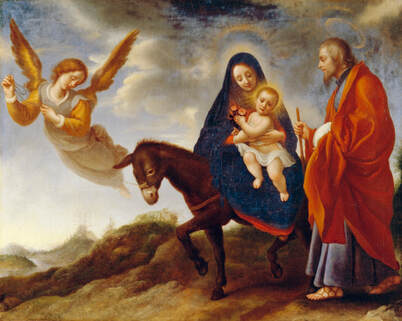 Hope — St. Joseph must have had a lot of it, leading his very pregnant wife through the hill country from Nazareth to Bethlehem to give birth to his son. I imagine it was an arduous journey filled with uncertainty. Sometimes amidst hard times, I’m tempted to let discouragement steal my hope; I forget that my circumstances will change in time. I crawled over the 2020 finish line, exhausted and tired, only to be met with the dead of winter. January is an isolating month in the best of times, nevermind government sanctions restricting social contact. The reality is that life is hard for a lot of people right now; so much change and instability due to the ongoing pandemic. But what is unchanging is that our faith always gives us reason to hope. As Catholics, we carry the Good News of the Resurrection within us. With the eyes of faith, no time is wasted to perfect ourselves in love. And we can look to the great examples of the saints to help guide our path. In a special way this year, Pope Francis invites us to renew our hope by placing an emphasis on Our Lord’s foster father. He has declared Dec. 8, 2020 to Dec. 8 2021 — The Year of St. Joseph. What St. Joseph represents in my life is a husband and father who is a faithful, patient, humble, courageous protector. Joseph didn’t utter a single word in the Bible, rather he communicated volumes through his attentive presence. The Holy Father Pope Francis encourages each of us with these words found in his Apostolic Letter Patris Corde: “Each of us can discover in Joseph – the man who goes unnoticed, a daily, discreet and hidden presence – an intercessor, a support and a guide in times of trouble.” My hope is to seize this opportunity to take a deeper dive into what St. Joseph’s secure, strong, safe, steadfast fatherly presence means in my life and the life of my family. Our family has set a few goals for the coming year to get to know St. Joseph better, and grow in relationship with him. I hope a few of these ideas will inspire you to think of ways to discover the presence of St. Joseph in your life and keep you anchored in hope.
Written by Sara Francis for Faithfully
|
Author
Catholic Pastoral Centre Staff and Guest Writers Archives
July 2024
Categories
All
|
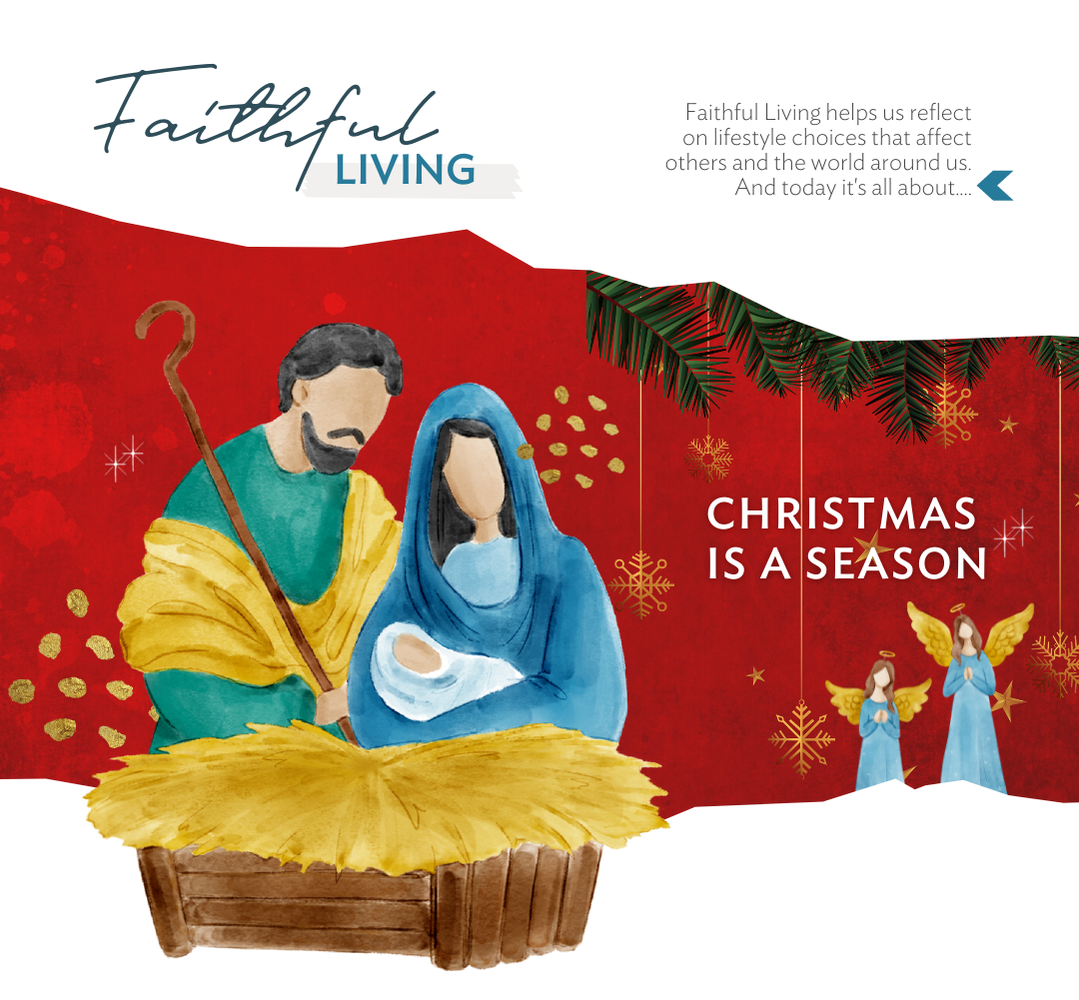
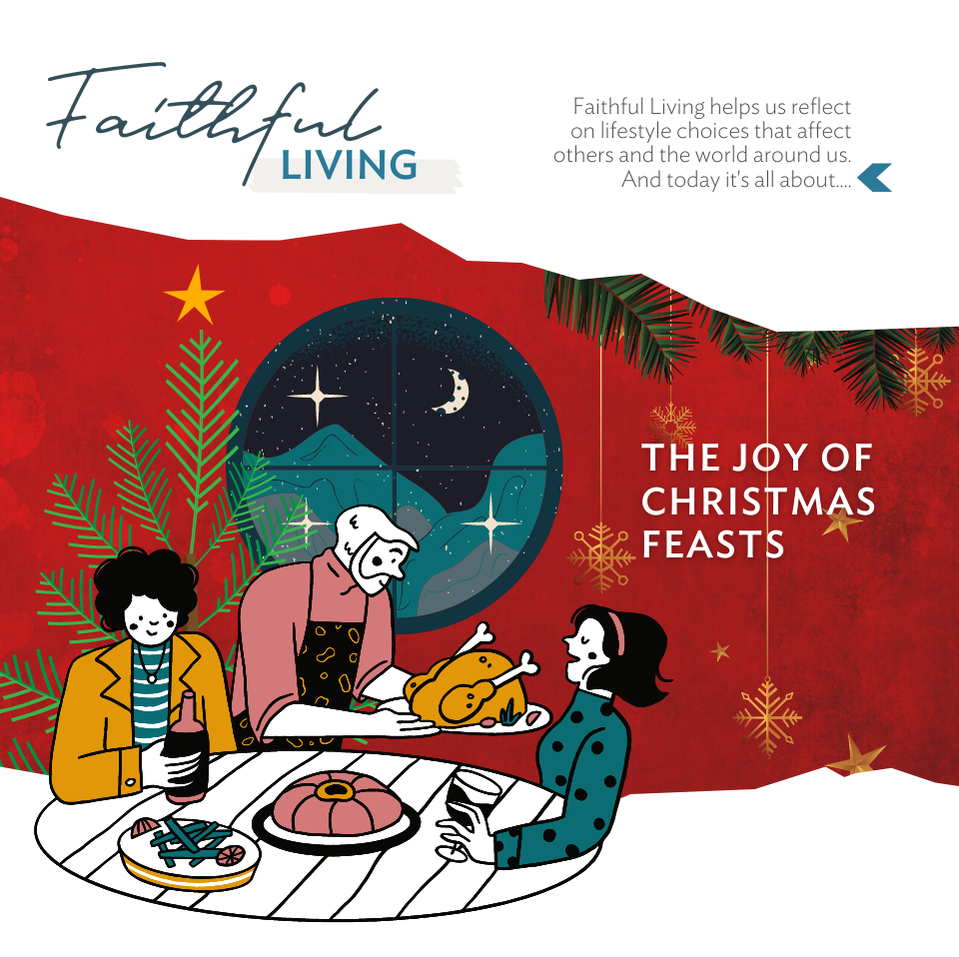
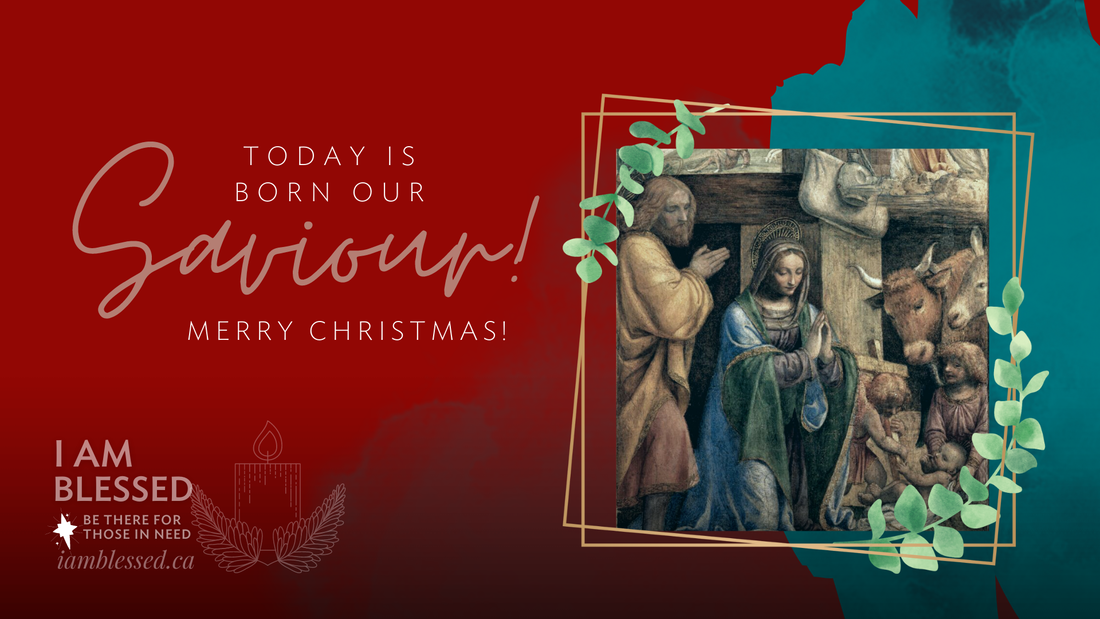

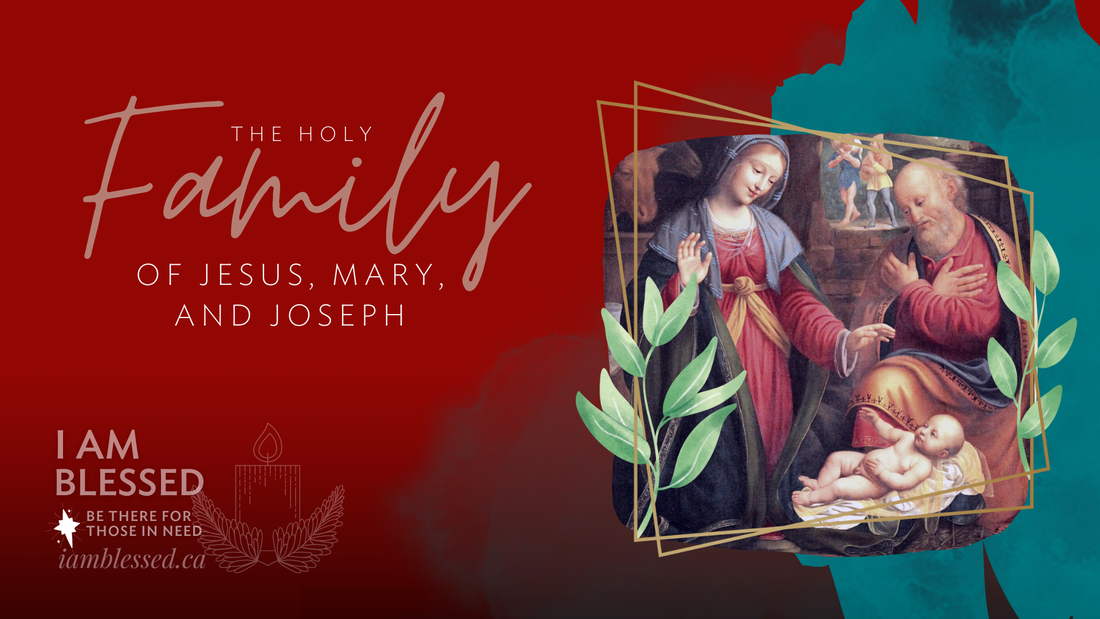
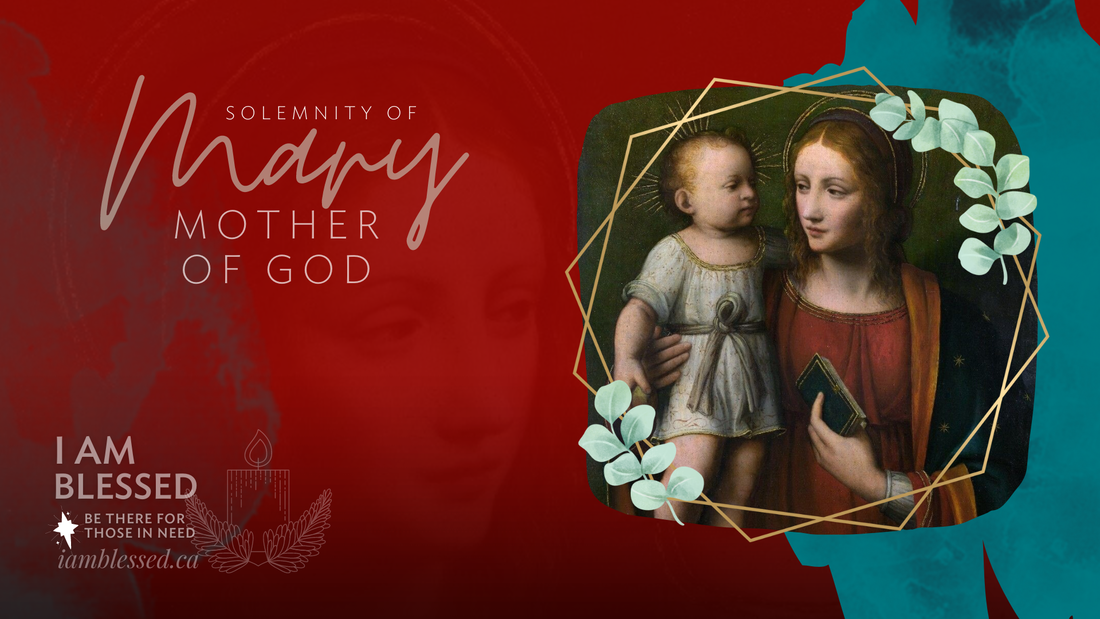
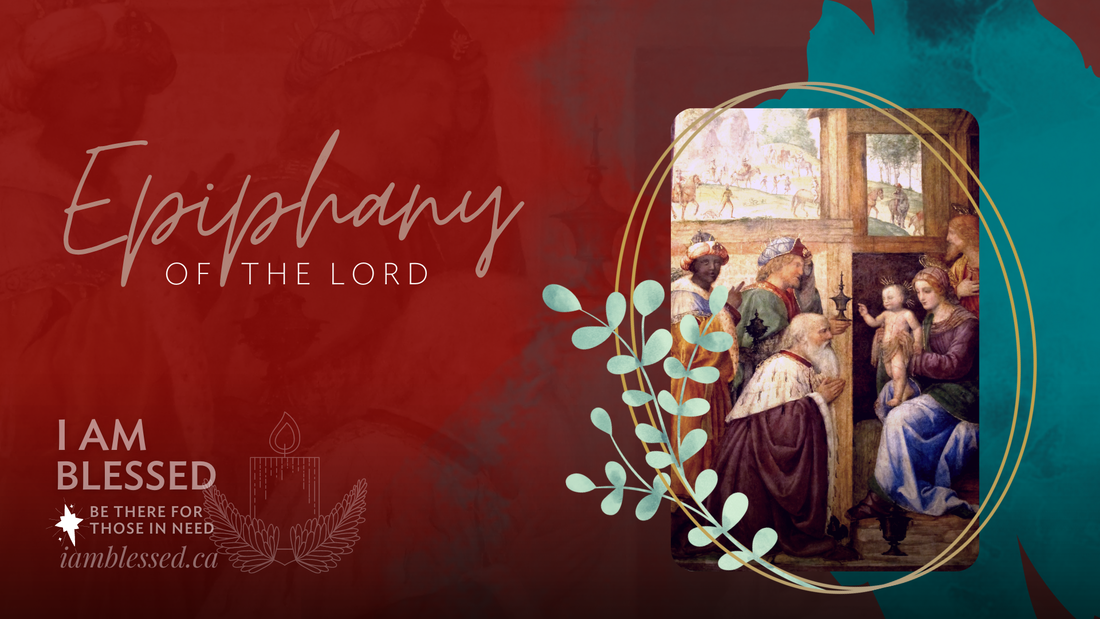

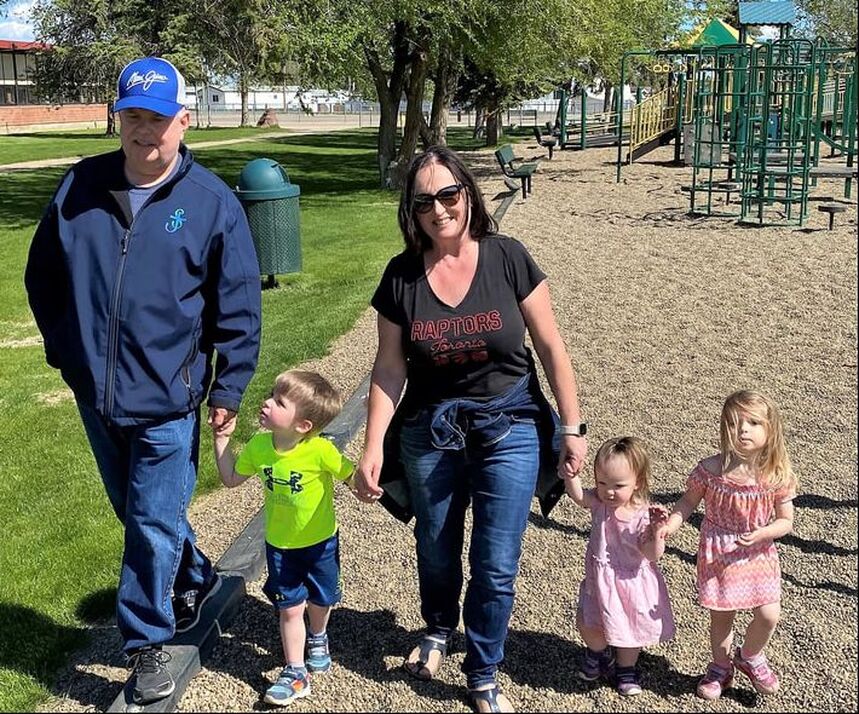

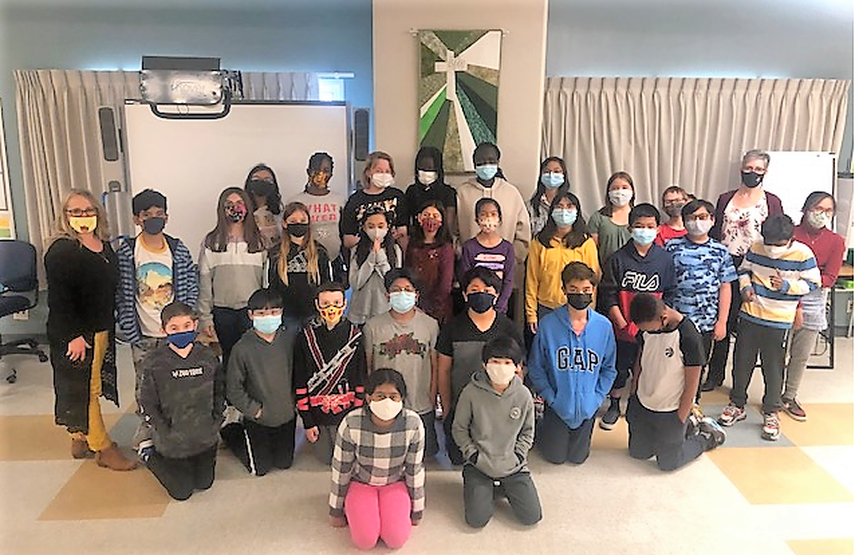
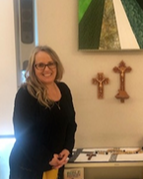
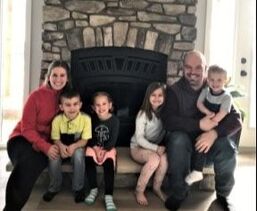

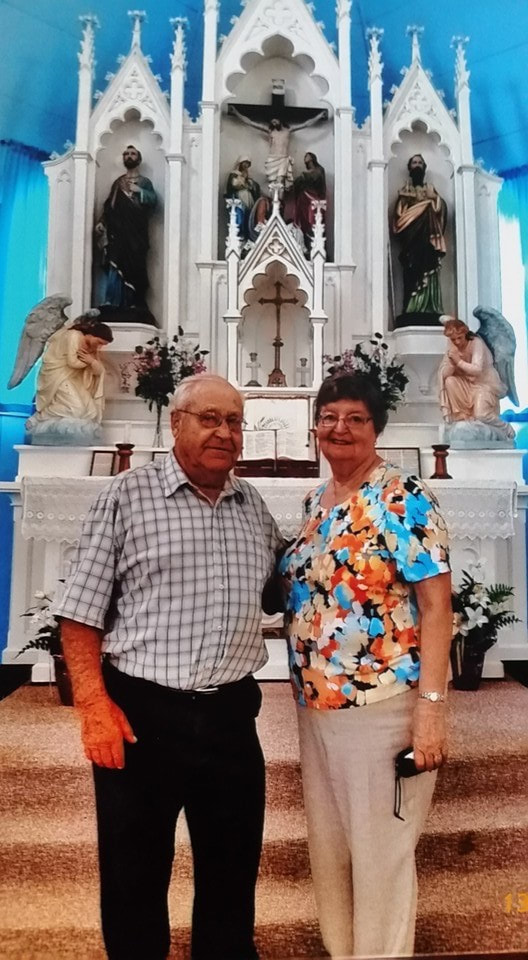


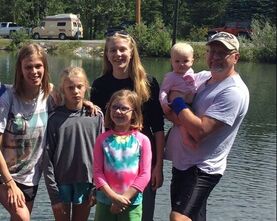
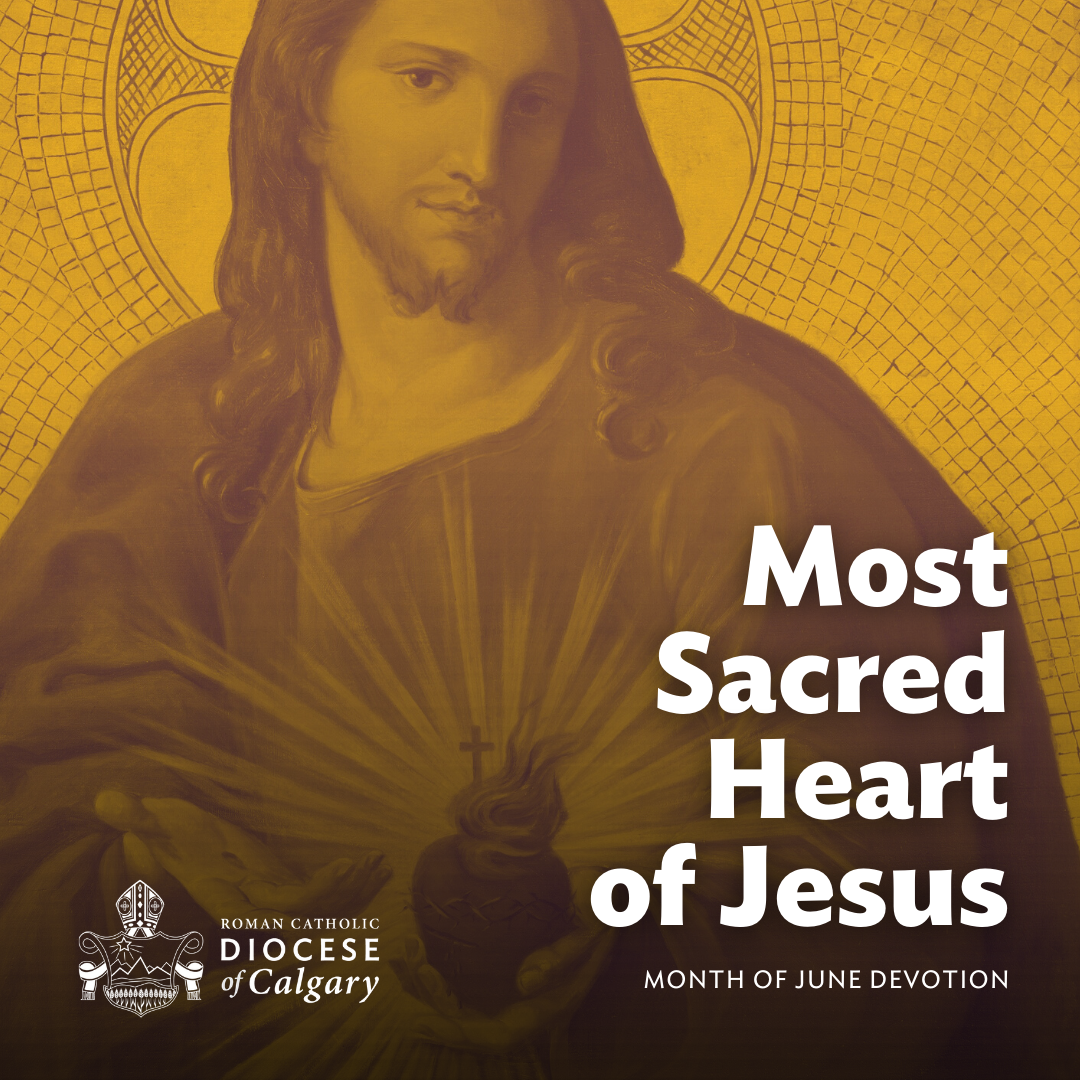
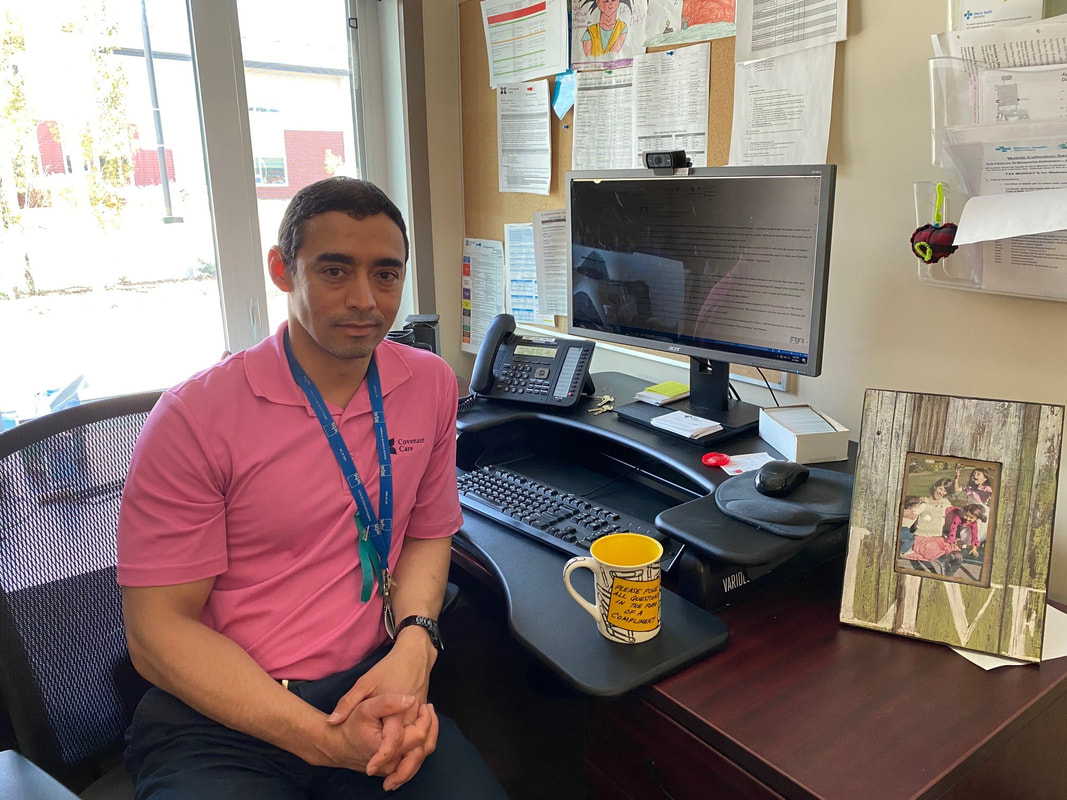

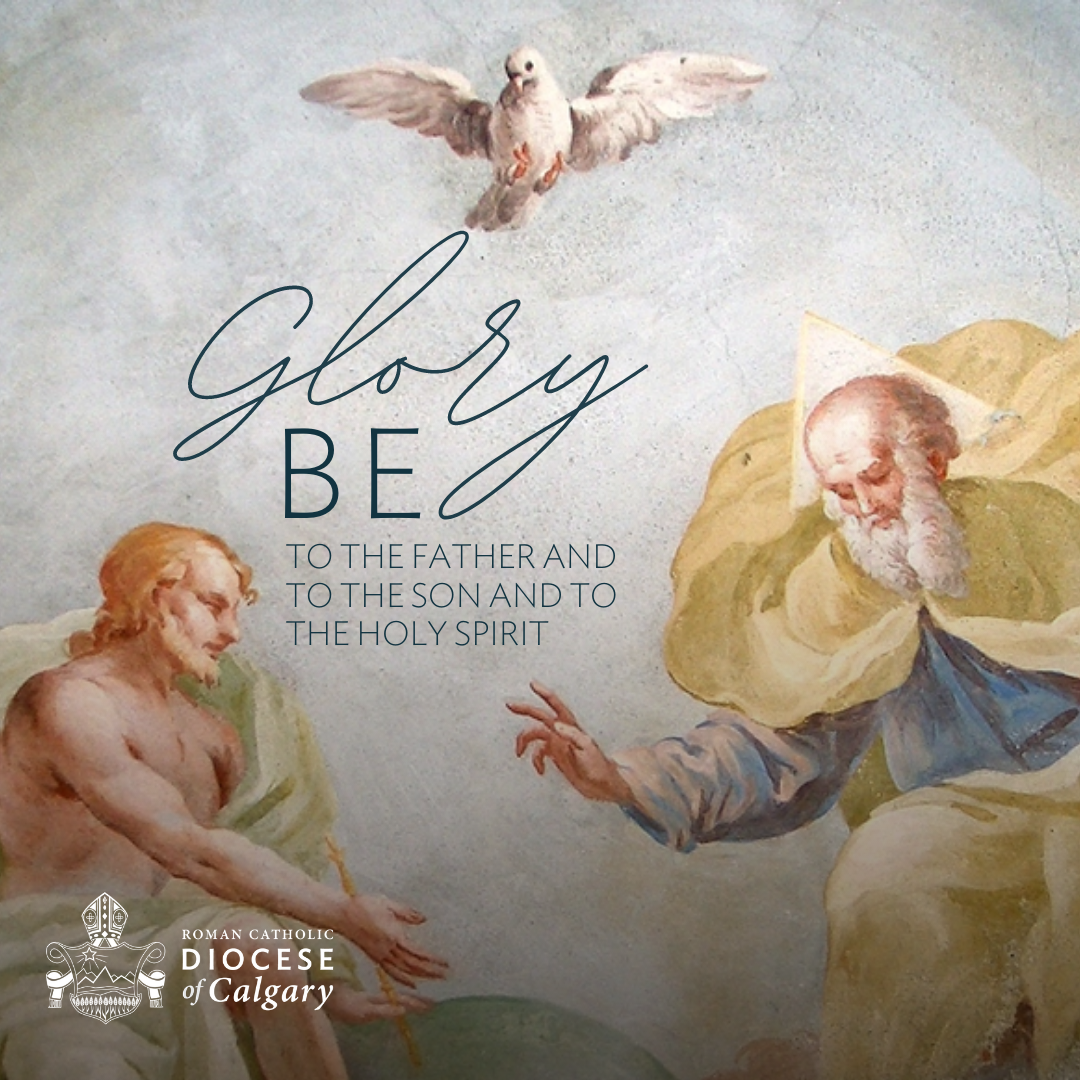
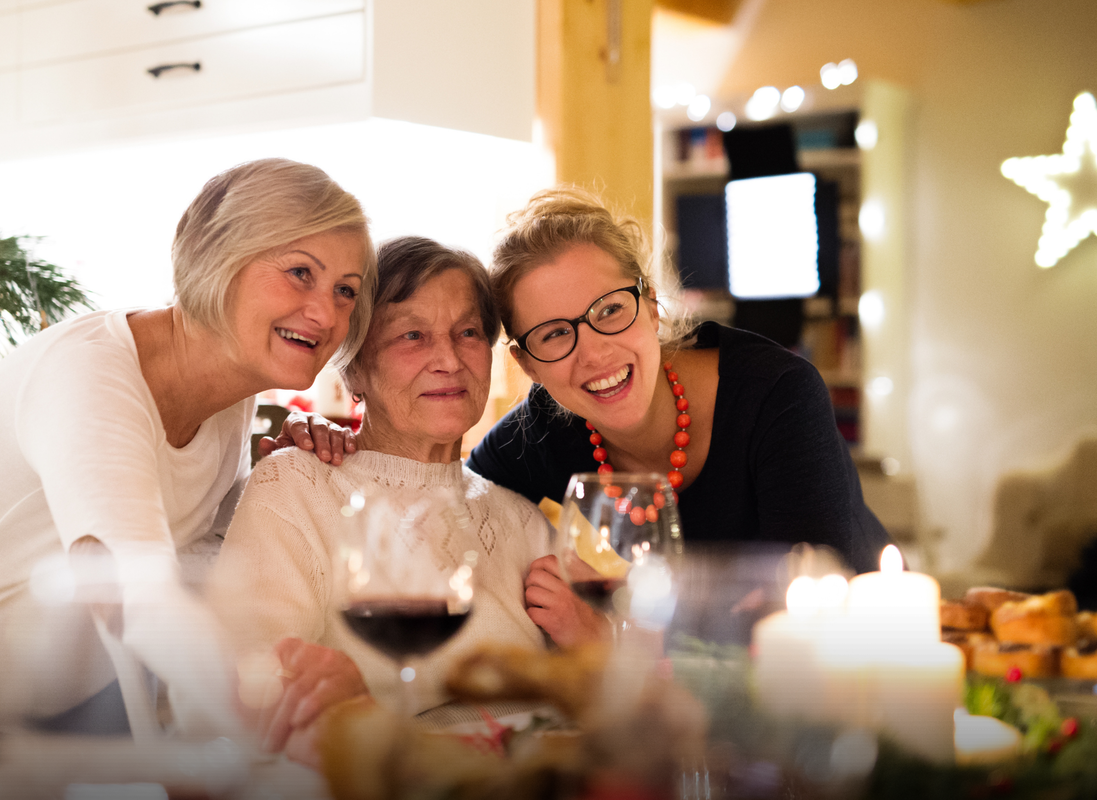
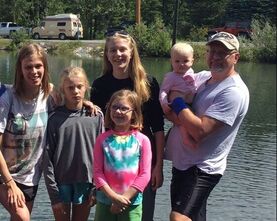
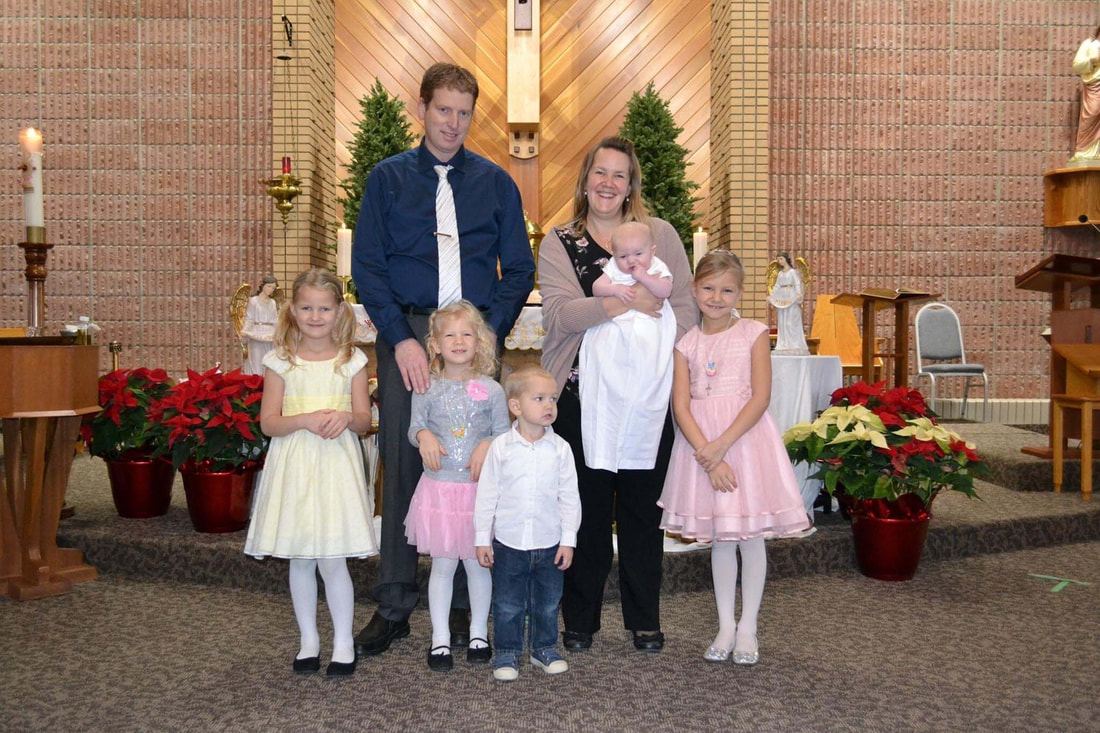
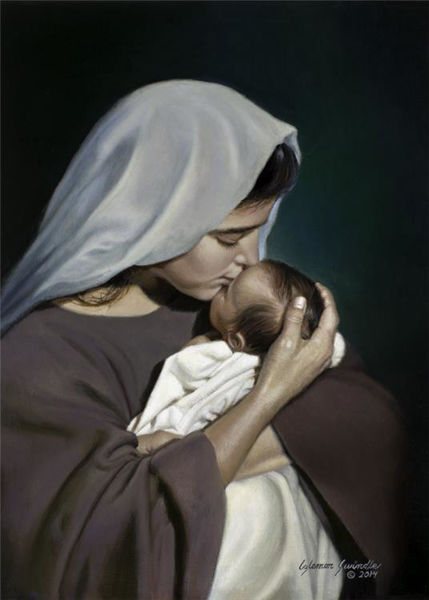
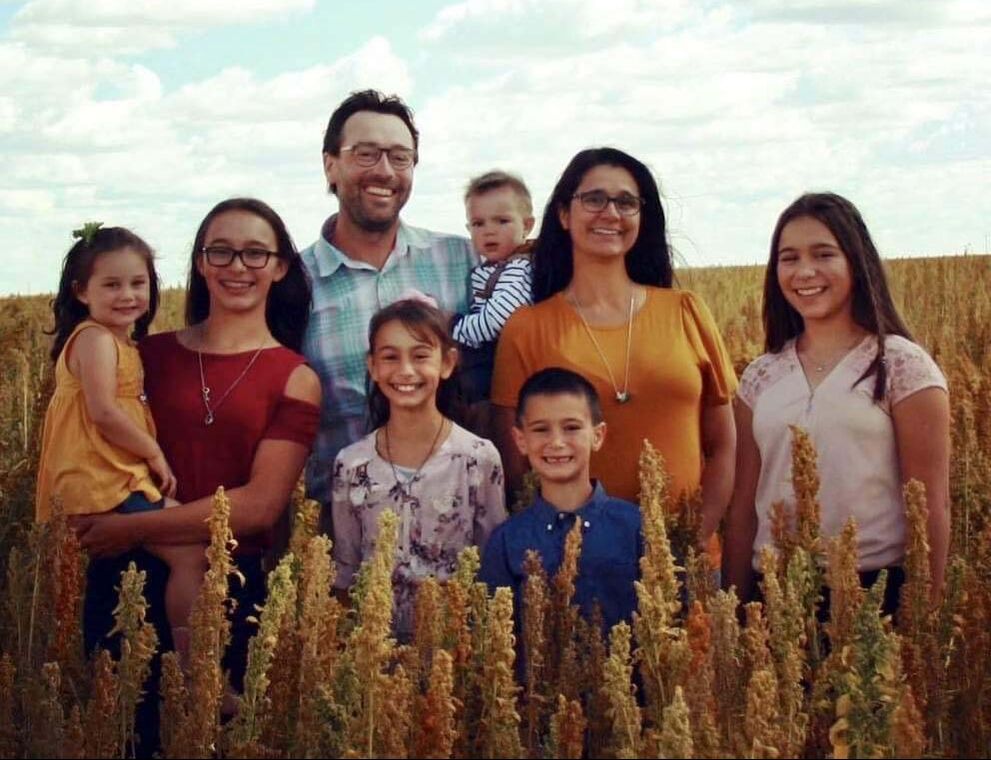


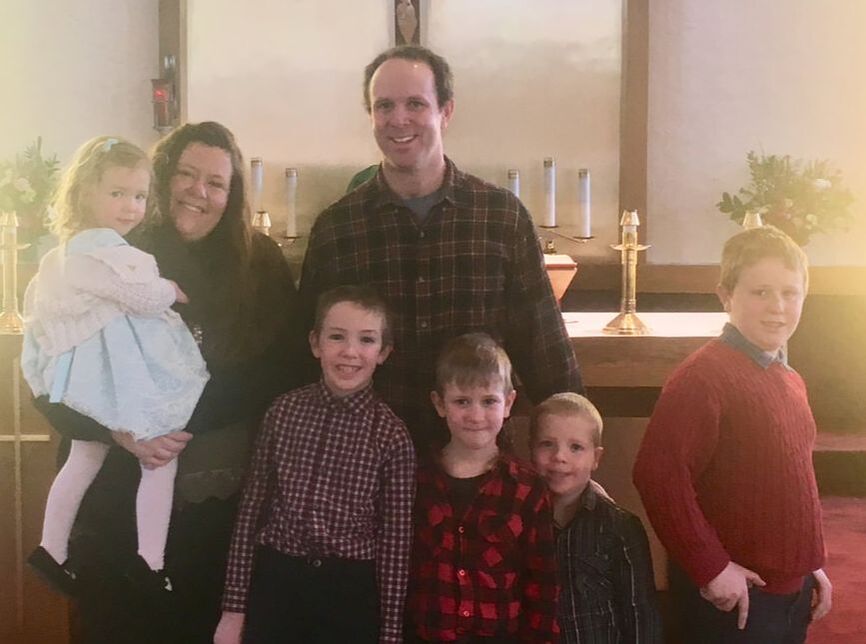
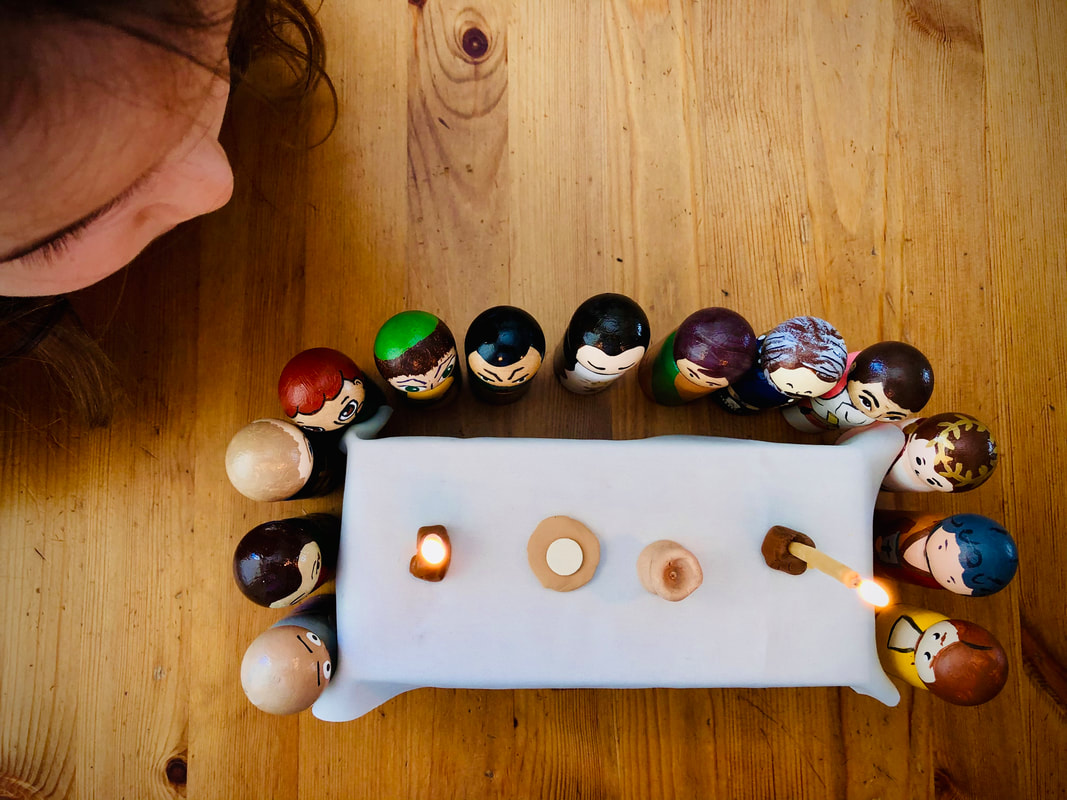
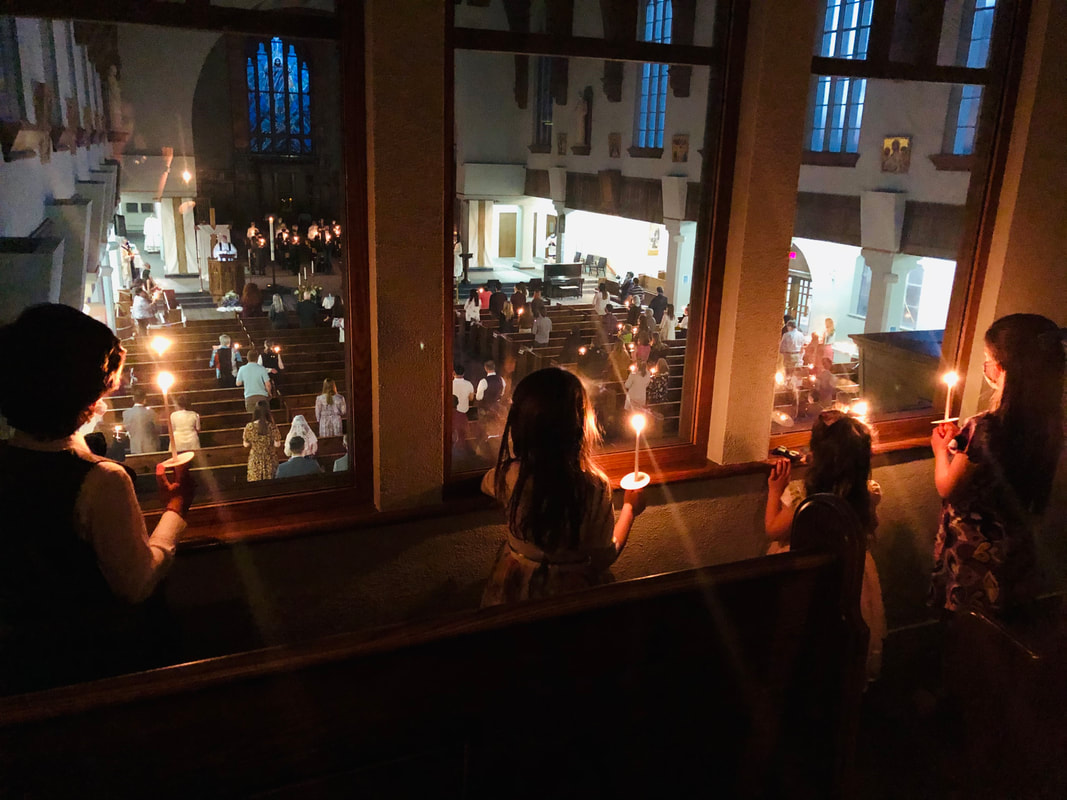
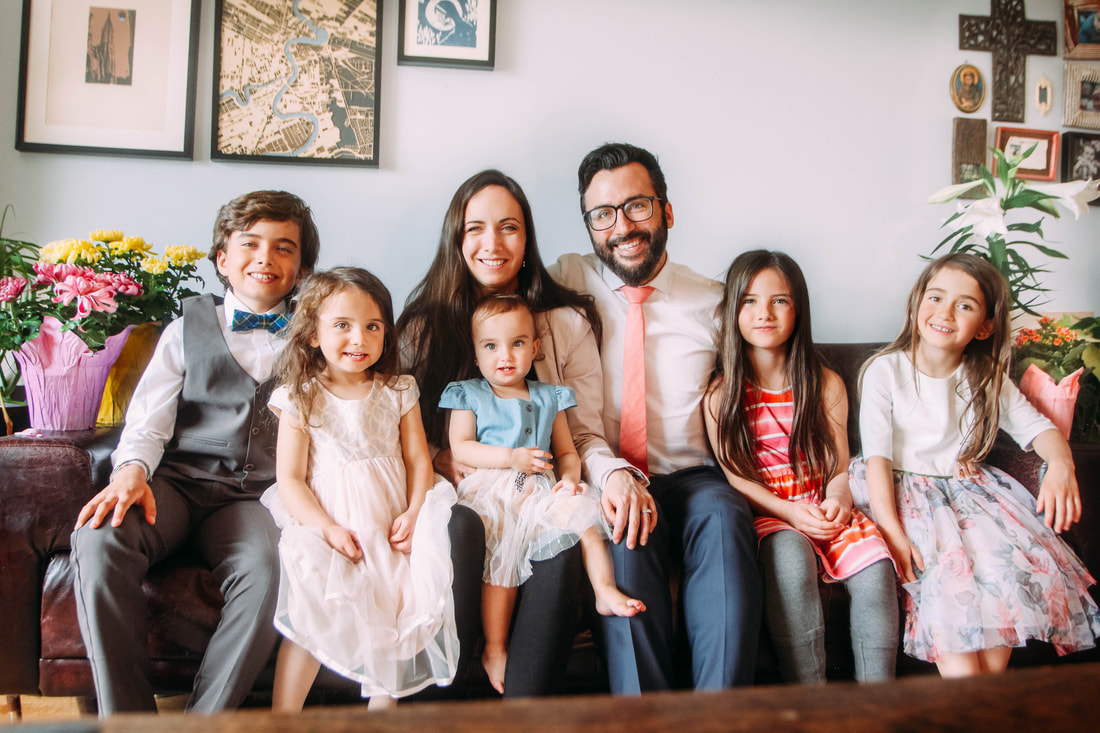

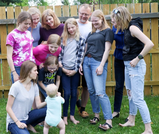


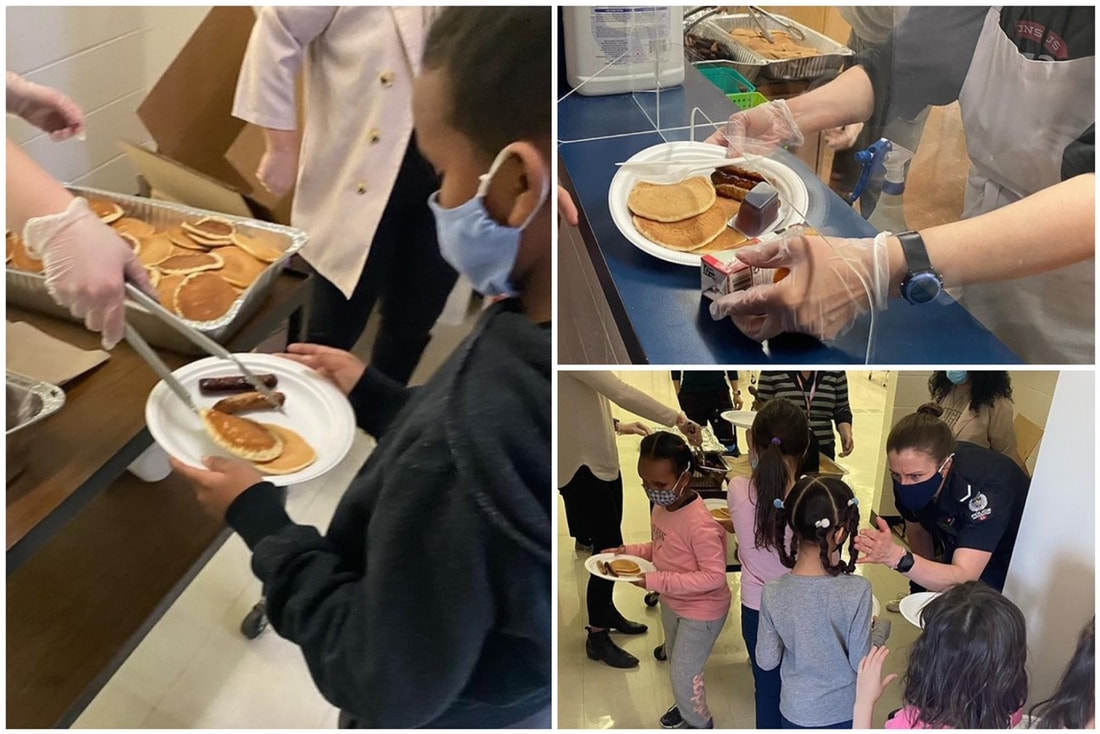

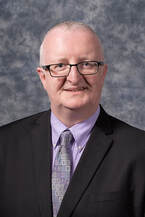

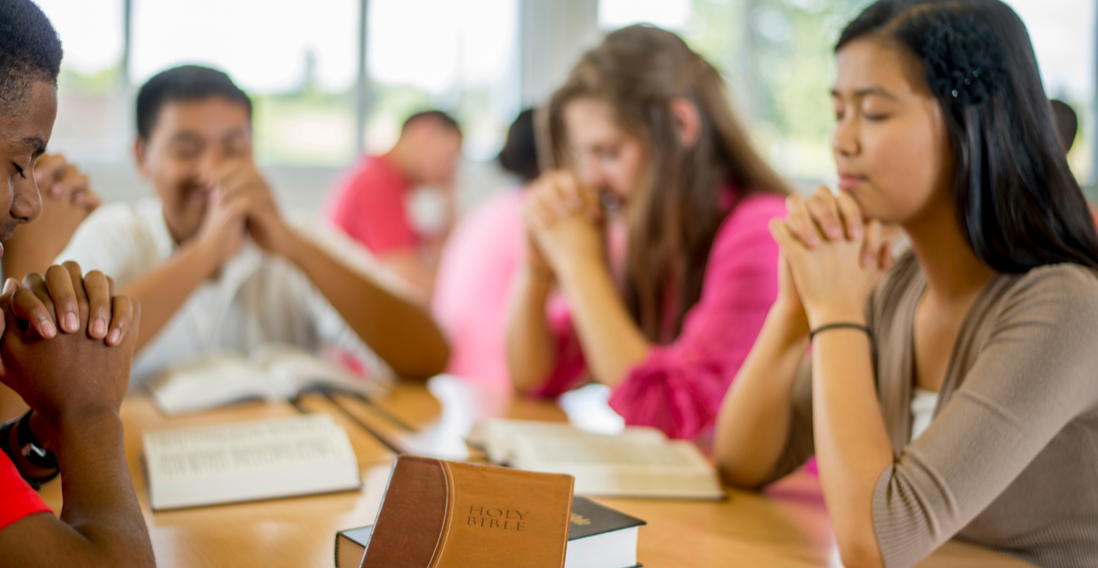
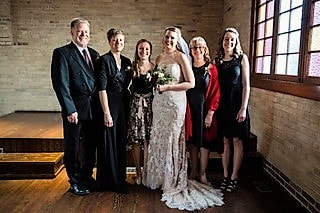


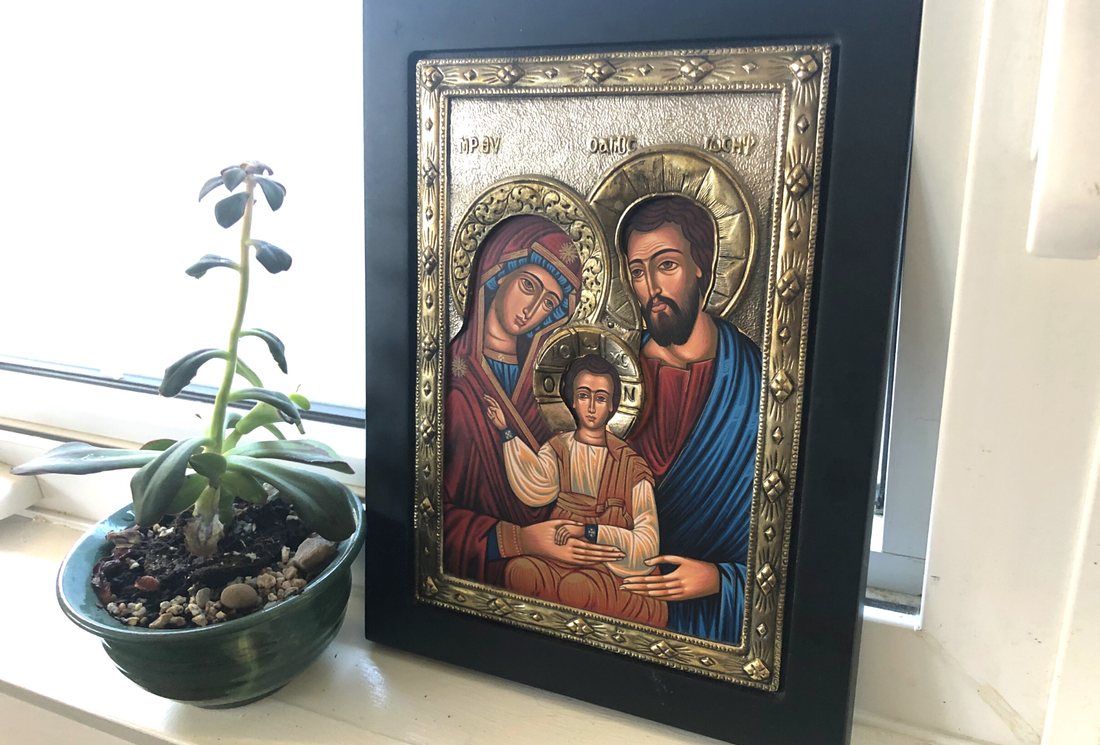
 RSS Feed
RSS Feed